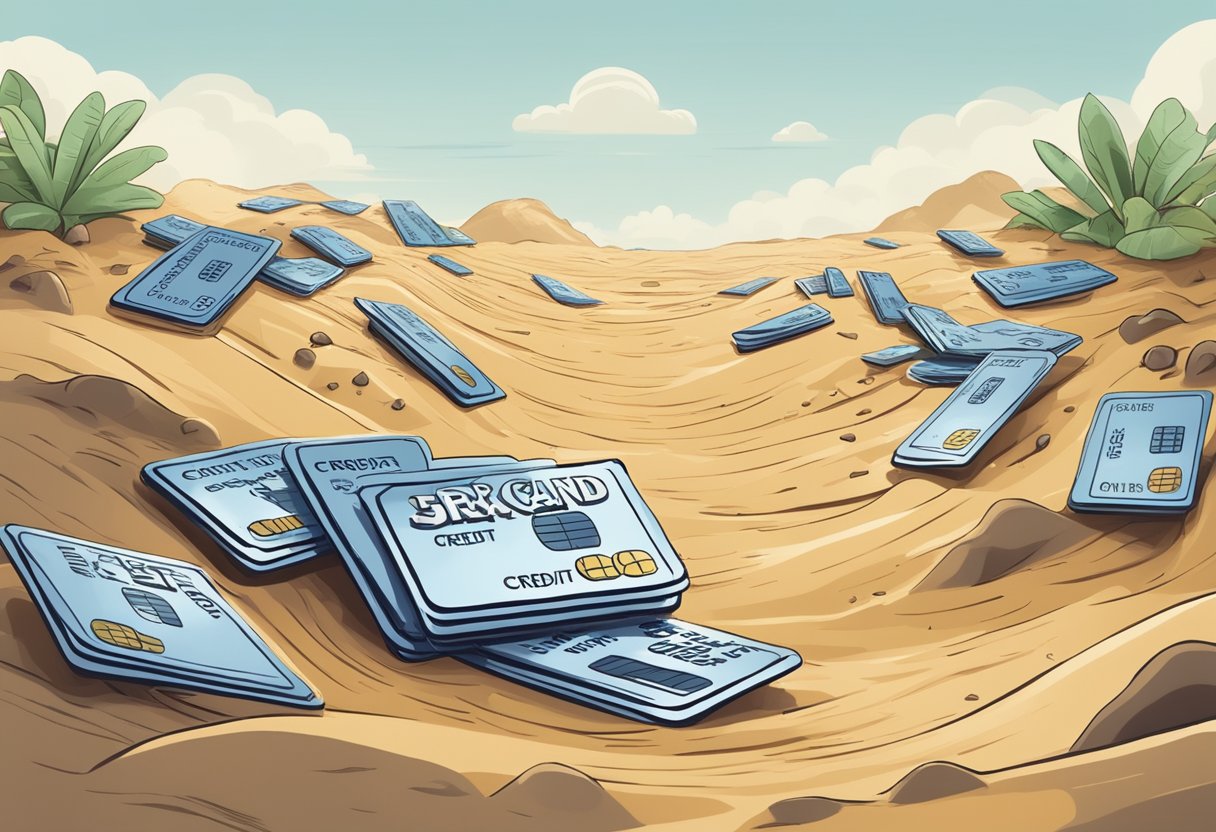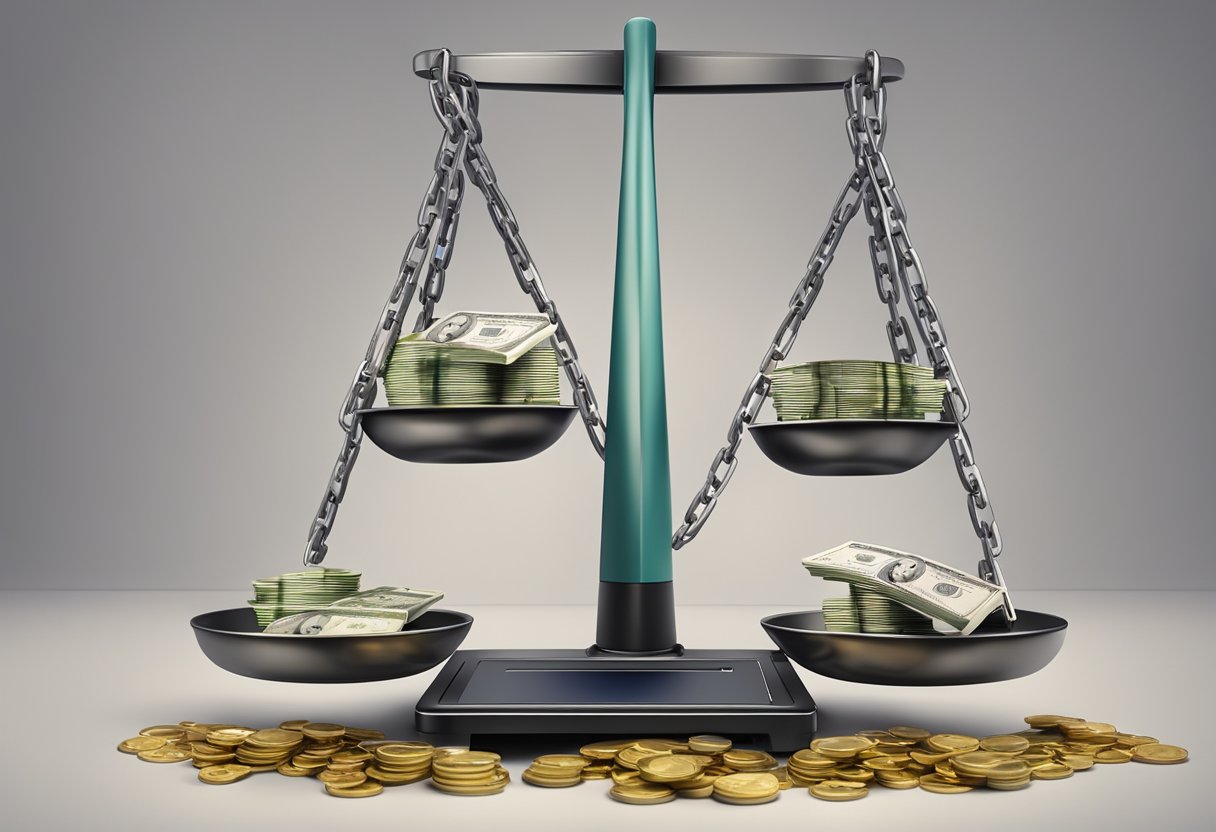Credit card debt relief programs promise a way out of financial strain, offering various options to manage or reduce overwhelming credit card debt. As Americans grapple with mounting personal finance challenges, understanding the intricacies of these programs is critical. While debt relief might seem like a lifeline, it’s essential to recognize the potential impacts on one’s financial landscape – both positive and negative. With numerous strategies available, it’s not only about finding relief but also about ensuring the decision aligns with long-term financial health.

It’s important to realize that credit card debt relief isn’t a one-size-fits-all solution. Assessing individual financial situations, understanding the range of programs available, and the long-term consequences of each are fundamental steps before committing to a course of action. Relief strategies can range from debt management plans and hardship programs to settlement and consolidation. Each approach comes with its own set of considerations, such as the effect on credit scores, financial obligations, and even potential tax implications.
Key Takeaways
- Understanding your financial situation is crucial before enrolling in debt relief programs.
- Evaluating the impacts on personal finance is key when considering credit card debt relief.
- Navigating the terms and protections of relief programs is essential to making informed decisions.
Understanding Credit Card Debt Relief Programs
When grappling with credit card debt, consumers may consider debt relief programs as a means to mitigate financial strain. These programs can take various forms, from debt consolidation to government-sponsored credit counseling.
The Role of Debt Relief Companies
Debt relief companies serve as intermediaries between the debtor and creditors. Their primary goal is to negotiate terms that could result in a reduced debt burden for their clients. This often involves proposing a debt settlement where companies negotiate with creditors to allow the debtor to pay a lump sum that is less than the full amount owed.
Different Types of Relief Programs
- Debt Management Plan (DMP): This is a service typically offered by credit counseling agencies that involves the organization taking charge of your monthly payments. In a DMP, the agency may work to lower your interest rates or waive certain fees.
- Debt Consolidation: It refers to taking out a new loan to pay off multiple debts, ideally with a lower interest rate. This can simplify monthly payments and may result in a lower overall monthly payment.
- Credit Card Hardship Programs: Offered directly by credit card companies, these programs can provide temporary relief in terms of reduced interest rates, waived fees, or lower monthly payments during periods of financial hardship.
- Government Programs: Although not as common, there are government-affiliated programs that offer credit counseling and education, such as those approved by the U.S. Trustee Program for pre-bankruptcy counseling.
Evaluating the Costs and Benefits

When considering credit card debt relief programs, individuals should meticulously analyze the trade-offs between immediate financial relief and potential long-term implications. This evaluation includes understanding the scope of potential savings against the accumulation of fees, the program’s effect on credit scores, and the altered terms of interest.
Potential Savings and Lower Interest Rates
Debt relief programs might offer the allure of reduced monthly payments and lower interest rates. These programs negotiate with creditors to lower overall balance and interest rates. It’s essential to compare the restructured APR with the original terms to confirm genuine savings. For example:
- Original Card Terms: 20% APR
- Negotiated Terms: 8% APR
Such reductions can significantly decrease the amount of money paid over time.
Fees and Service Charges
While the promise of debt relief seems appealing, one must assess the fees and service charges involved. Generally, debt relief services charge a percentage of the debt or a flat fee, which might offset the savings gained from lower interest rates. They may also require an upfront payment or a monthly service fee, which needs to be factored into the overall cost assessment. The details can often be found in the fine print, so scrutinizing the terms for hidden fees is crucial.
Impact on Credit Scores
A debt relief program can have a significant impact on an individual’s credit score. While entering such a program can alleviate the burden of high repayments, it may also signal to future lenders that there was difficulty managing credit obligations. This can be reflected in the credit report, potentially reducing the individual’s creditworthiness in the short term. It’s essential to understand how each program reports to credit bureaus to gauge the potential impact properly.
Navigating Agreements and Negotiations

When addressing credit card debt relief, comprehending the intricacies of agreements and the subtleties of negotiating with issuers are pivotal. These elements guide the roadmap toward a feasible payment plan.
Working with Credit Card Issuers
Individuals seeking debt relief should first approach their credit card issuer to discuss potential payment plans that suit their financial situation. It’s crucial to understand that issuers may offer options like reducing monthly payments or temporary relief from minimum payments. Before initiating negotiations, one should prepare a clear outline of their income and expenses to demonstrate their financial status.
- Pre-negotiation Checklist:
- Assess financial standing: Gather information about your income, expenses, and total debt.
- Research issuer policies: Understand the specific terms and conditions related to debt relief offered by your credit card companies.
- Set realistic goals: Determine what you can reasonably afford to pay each month.
Negotiating can directly influence one’s financial future, so it’s advised to approach talks with the issuer calmly and informed. Also, be succinct in communicating your situation to the credit card issuer.
Understanding Your Agreement
Once a preliminary agreement is reached, scrutinizing every detail of the terms and conditions is essential. An agreement with a credit card company typically outlines the revised payment plan, including:
- New monthly payments
- Duration of the payment plan
- Any changes to interest rates or fees
Reading and Understanding Contractual Terms:
- Clarity on penalties: Be aware of repercussions for missed or late payments.
- Interest rate adjustments: Look for changes in interest rates that may affect the total amount owed.
It’s important to ask questions if any part of the agreement seems unclear. Individuals should never feel pressured to accept terms and conditions that are not fully understood or appear unfavorable. A thorough review helps ensure that the agreement aligns with the debtor’s repayment capabilities, avoiding any further financial complications.
Protecting Yourself from Risks
When seeking credit card debt relief, consumers should be vigilant and proactive in safeguarding their finances against potential scams and ensuring they understand their rights.
Avoiding Scams and Unethical Practices
To sidestep scams and unethical practices, it is essential to research debt relief companies thoroughly before engaging their services. The Federal Trade Commission (FTC) advises consumers to be wary of companies that charge upfront fees before settling your debts, a practice that is considered illegal under the FTC’s Telemarketing Sales Rule. Reliable indicators of scams include promises of guaranteed debt relief and demands for payment before any work is done.
- Research thoroughly: Look for reviews and check with the Better Business Bureau.
- No advance fees: Legitimate companies will not charge fees before providing assistance.
- Be skeptical of guarantees: No company can guarantee the success of debt relief efforts.
Rights and Protections for Consumers
Consumers have specific rights when dealing with credit card debt. For instance, the Consumer Financial Protection Bureau (CFPB) offers guidelines and protections to help consumers navigate the complexities of debt relief. These protections include receiving clear information from debt relief companies such as National Debt Relief about any risks associated with their programs. Additionally, consumers considering bankruptcy have rights under the Chapter 7 Bankruptcy code, which provides a legal pathway to discharge certain debts and offers a fresh financial start.
- Clear communication: Companies must transparently disclose program details and risks.
- Understanding bankruptcy: Familiarize yourself with Chapter 7 Bankruptcy to know if it’s a suitable option.
- Contact customer service: In case of uncertainties, the customer service teams of your credit card issuer or debt relief company should provide guidance.
Frequently Asked Questions
In this section, readers will find insights into the functioning, risks, and discernment methodologies for credit card debt relief programs, with particular attention given to key changes during and after the COVID-19 pandemic, and advice for reaching out to creditors through forgiveness letters.
How do credit card debt relief programs actually work?
Debt relief programs negotiate with creditors on behalf of cardholders to reduce the amount owed. These programs often consolidate debts into a single payment, aiming to make debts more manageable and resolve them faster than the cardholder might on their own.
What are the potential risks associated with debt settlement companies?
Working with debt settlement companies may come with risks such as damage to credit scores, high fees, and potential tax liabilities on forgiven debt. They also do not guarantee successful negotiation, which could leave cardholders in a more precarious financial position.
Can the government truly provide assistance with credit card debt forgiveness?
The government does not typically offer credit card debt forgiveness. However, there are government-approved counseling agencies that can provide guidance and potential enrollment in debt management plans, which can facilitate reduced interest rates and fee waivers.
What impact did COVID-19 have on credit card debt forgiveness policies?
COVID-19 prompted many credit card issuers to offer temporary relief programs, including payment deferrals and fee waivers. These policies aimed to help those impacted by the pandemic manage their credit card debts more effectively during economic uncertainty.
How can I differentiate between legitimate and fraudulent debt relief programs?
To identify legitimate debt relief programs, look for accreditation by recognized industry organizations, transparency in fees and processes, and a clear track record of success. Be wary of organizations that make promises of guaranteed debt forgiveness or charge upfront fees.
What should be included in a credit card debt forgiveness letter?
A credit card debt forgiveness letter should articulate the cardholder’s financial situation, the willingness to resolve the outstanding debt, an explanation of any hardship causing delinquency, and a clear request for specific relief measures, such as lower interest rates or settlement offers.